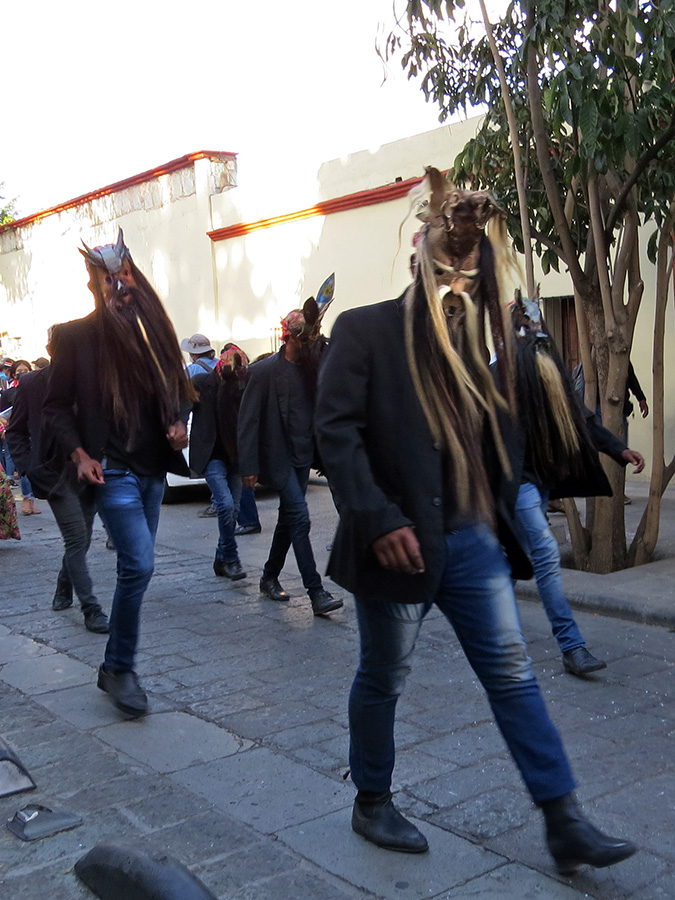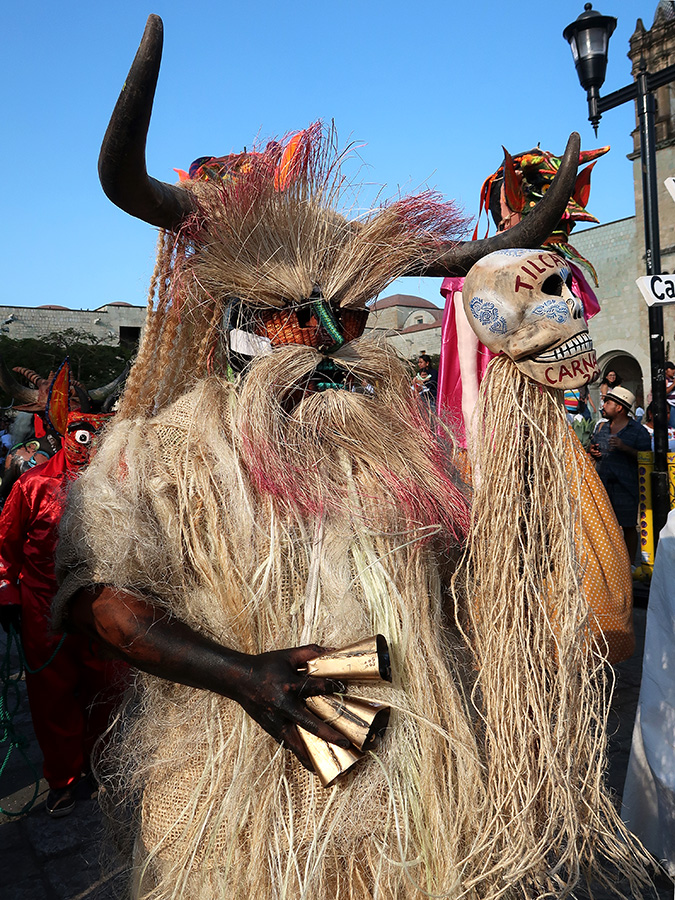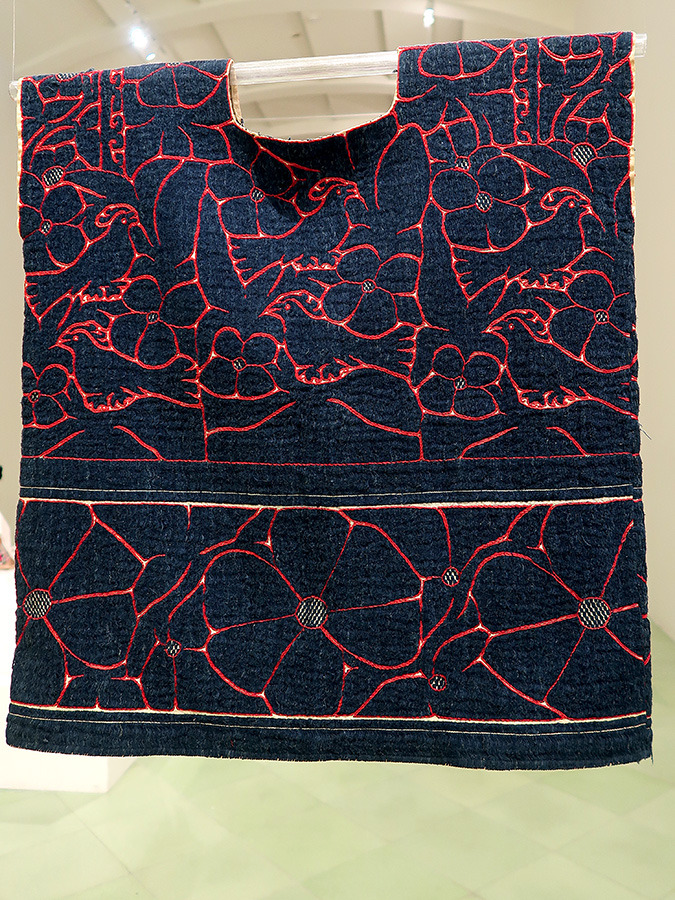The wedding industry is booming in Oaxaca and some of the biggest and most elaborate bodas (weddings) happen at the gold leaf laden Templo de Santo Domingo de Guzmán. While the doors of the church are closed to the public during the ceremony, all are welcome to enjoy the celebration that follows once the newly married couple emerges through the massive wooden doors. Wedding planners provide traditional wedding calendas (parades) that include a brass band, bride and groom monos, marmotas emblazoned with the couple’s first names, dancers dressed in regional costumes, and often mezcal! This was one of last Saturday’s contributions…
Needless to say, there is a lot of “hurry up and wait” for both participants and onlookers. The anticipation builds before the band strikes up tunes familiar to Oaxaqueños and anyone who has attended La Guelaguetza, the bride and groom step into the atrium, and the dancing begins.
The band, dancers, bride, groom, and wedding guests will eventually dance their way down Oaxaca’s walking street, the Macedonio Alcalá (aka, Andador Turístico), stopping traffic at intersections and tourists on sidewalks, before arriving at the reception destination — wherever that may be. By the way, if you are wondering about the cost for all of this, according to this website, the price for a wedding with the reception at the beautiful Jardín Etnobotánico (originally part of the Santo Domingo convent complex) is 4,000 pesos per person. Doing the math: For 100 people, at the current exchange rate, that would be over $20,000 (US) — well above the price range for most Oaxaqueños but quite popular among the well-heeled destination wedding crowd.



































































































































































 Mexican Peso Converter
Mexican Peso Converter